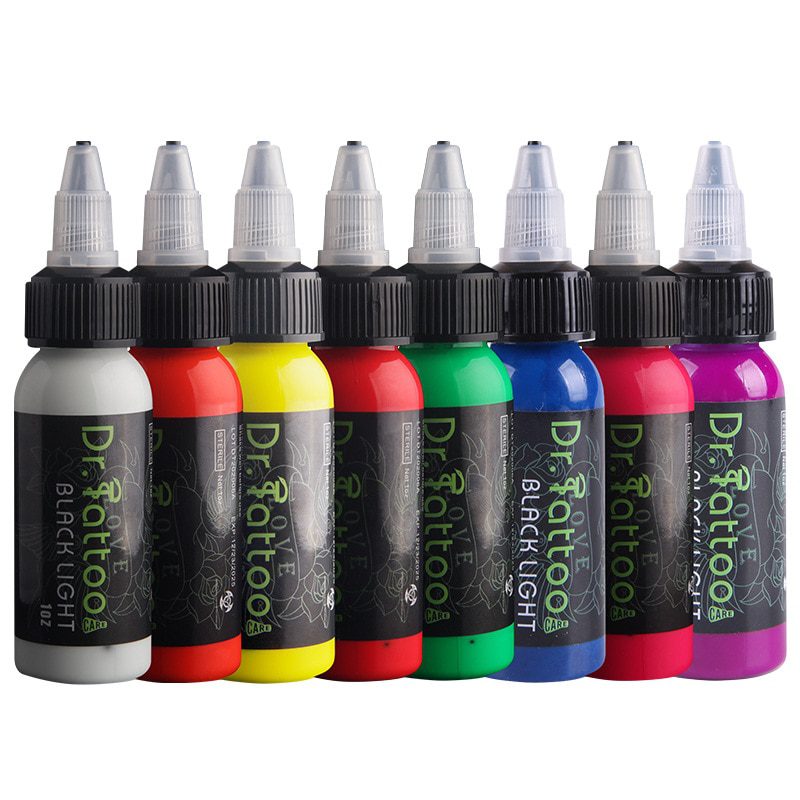
Under Fire: Blue and Green Tattoo Pigments
The European tattoo industry is facing new restrictions that could seriously affect not only the artistic activities of the community, but also the safety of customers. Started by Michl Dirks and tattoo artist Erich Mehnert, the Save the Pigments initiative aims to draw attention to what the new laws could mean.
The restrictions specifically apply to two pigments: blue 15:3 and green 7. Although at first glance this may seem like a small part of the huge number of colors available to tattoo artists today, in fact it will affect the many different tones that tattoo artists use. .
Sign the petition to save these important pigments.
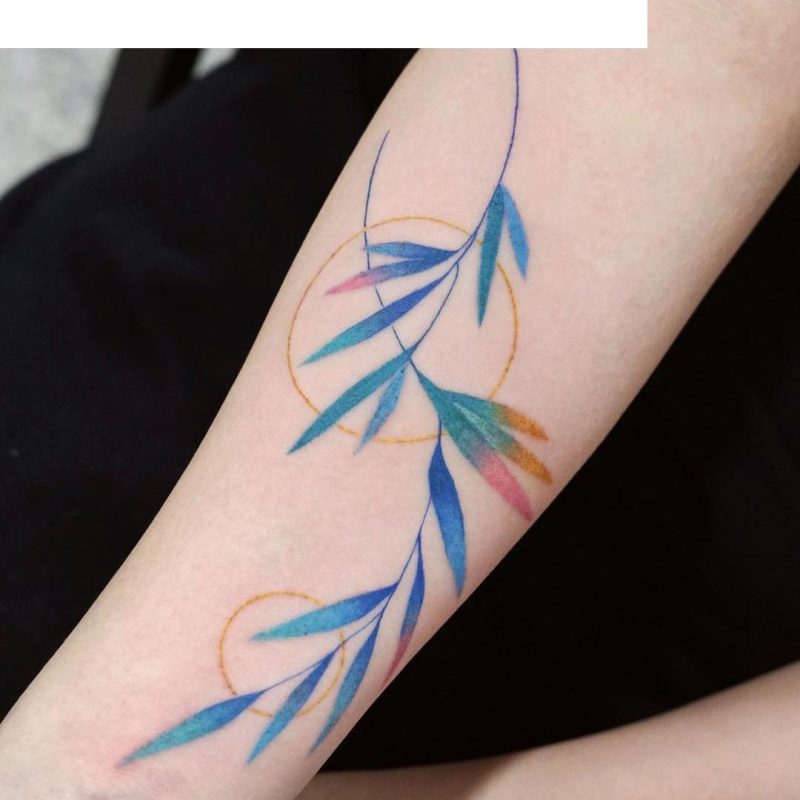
Watercolor tattoos from 9room #9room #watercolor #color #unique #nature #plant #leaves
rose tattoo Mick Gore.
In the video, Mario Bart, creator and owner of INTENZE ink, puts this into perspective: “It doesn't just affect all of your green tones or all of your blue tones. It will also affect purples, some browns, a lot of blended tones, muted tones, your skin tones, all that... You're talking about 65-70% of the palette a tattoo artist uses."
Erich also shared some thoughts on what the loss of these colors would mean for the tattoo industry in the EU. "What will happen? The consumer/customer will continue to demand conventional high quality colored tattoos. If they cannot get them from an official tattoo artist in the EU, they will go to countries outside the EU. If this is not possible due to geological conditions, clients will look for illegal tattoo artists. With this ban, the EU Commission also encourages illegal work.”
It's not just the monetary and economic implications, not the ability of artists to compete fairly in the industry, or the ability to retain their creative freedom, but it may also have a negative impact on the safety of clients.
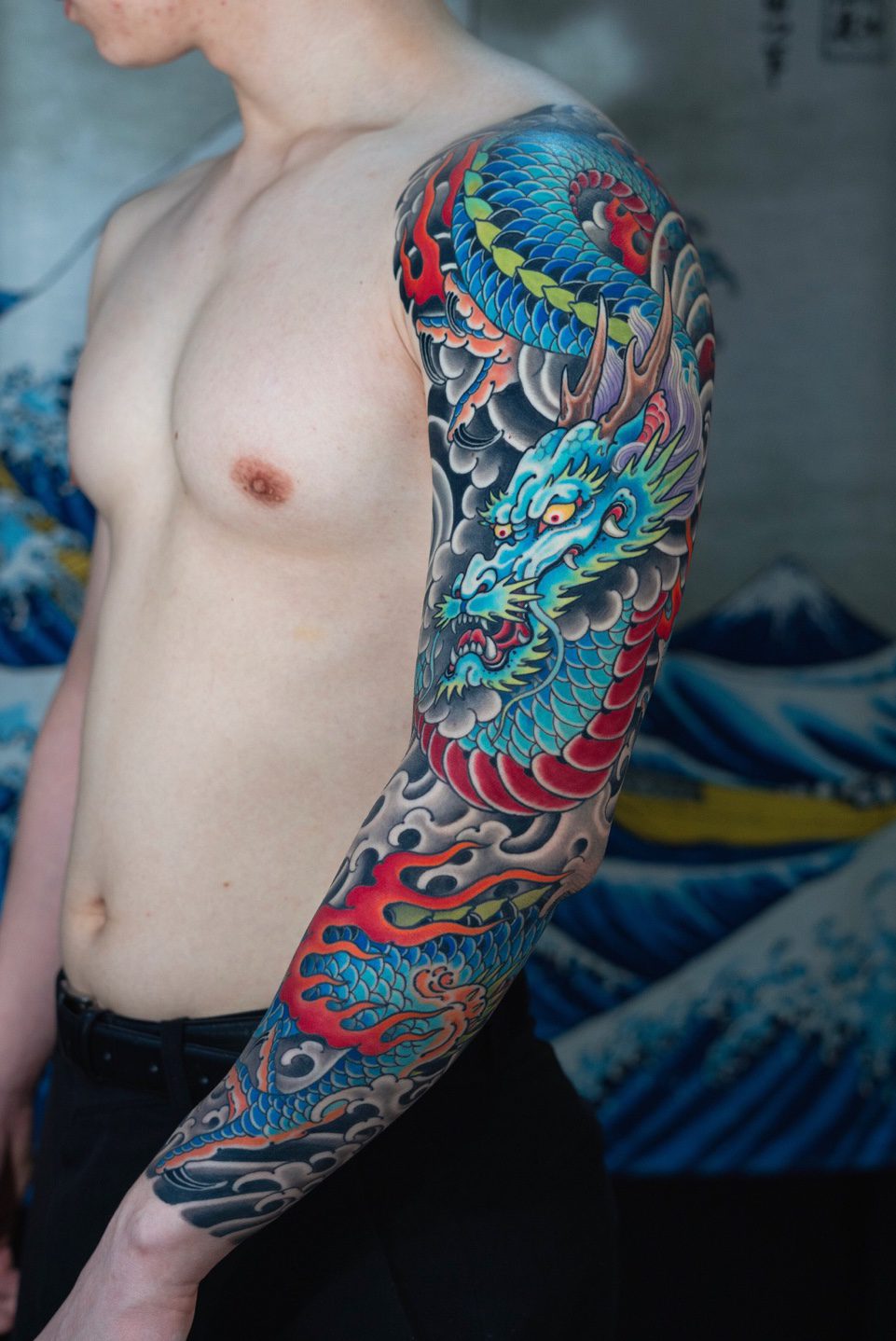
Blue dragon sleeve.
For those concerned about the safety of these inks, it's important to keep in mind that there isn't really enough scientific evidence to completely ban the use of these pigments. Erich says: "The German Federal Institute for Risk Assessment states that there is no scientific evidence that these two pigments are harmful to health, but there is also no scientific evidence that they are not."
Michl also weighs in and says, “Blue 15 is banned for use in hair dyes due to the global hair dye manufacturer not submitting a Toxicological Safety Dossier for Blue 15 in hair products. This is the reason for the Appendix II notice and therefore the ban on this tattoo ink."
So why are these pigments targeted? Erich explains: “The two pigments Blue 15:3 and Green 7 are already banned by the current EU Cosmetics Regulation because at the time both safety dossiers for hair dyes were not submitted and therefore they were automatically banned.” Michl adds: "ECHA took Appendices 2 and 4 from the cosmetics directive and stated that if the use of substances is restricted in both applications, it should be restricted for tattoo inks as well."
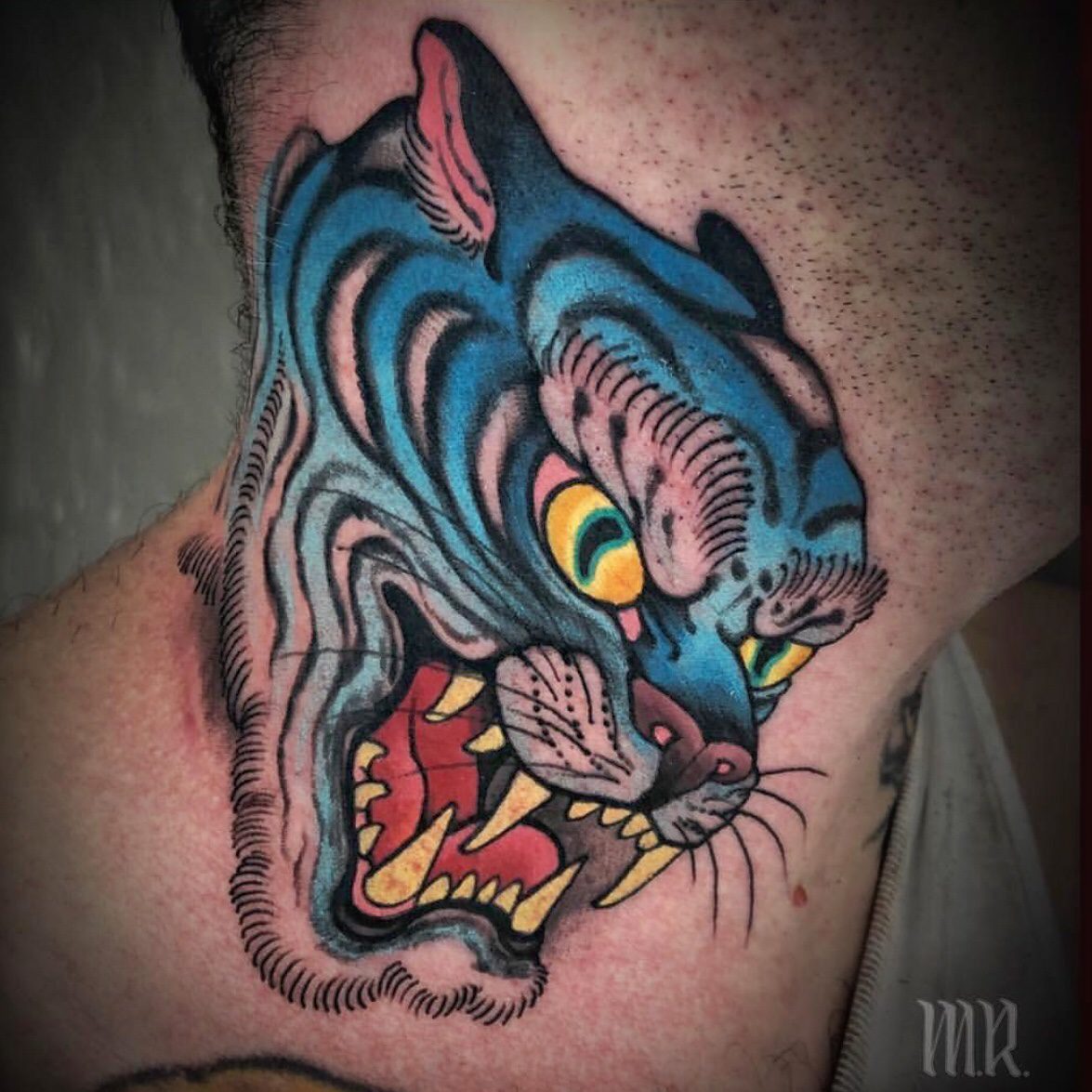
Blue tiger
Michl goes on to explain why these pigments are under fire. “ECHA, the European Chemicals Agency, has restricted more than 4000 different substances. He also recommended limiting the use of 25 azo pigments and two polycyclic pigments, blue 15 and green 7. The 25 azo pigments are interchangeable as there are enough suitable pigments to replace the identified hazardous pigments. The problem starts with the banning of two polycyclic pigments, Blue 15 and Green 7, as there is no alternative 1:1 pigment that can cover the color spectrum of both. This circumstance can lead to the loss of almost 2/3 of the modern color portfolio.”
Most of the time people are worried about tattoo inks, it's because of their toxicity. Tattoo inks have been targeted, mainly because they are believed to contain highly carcinogenic ingredients. But do blue 15 and green 7 cause cancer? Michl says probably not, and there is no scientific reason why they should be labeled as such: “The 25 banned azo pigments are banned due to their ability to release or break down aromatic amines, which are known to be carcinogenic. Blue 15 is simply banned because it is included in Annex II of the cosmetics directive.”
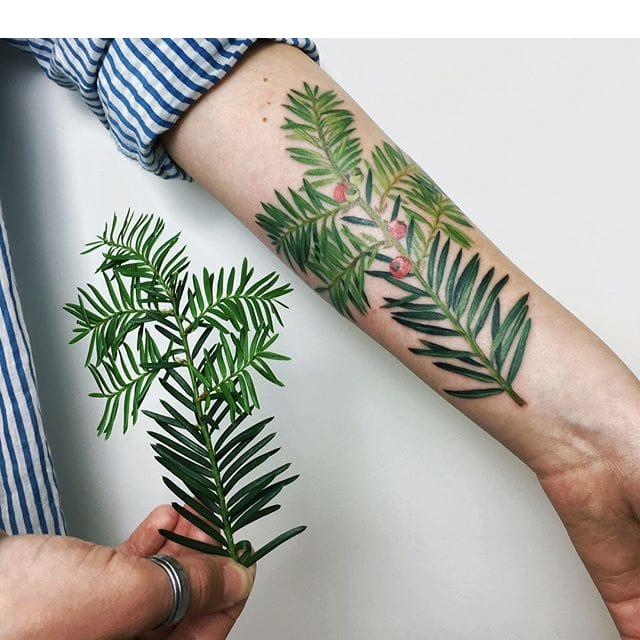
Botanical by Rit Kit #RitKit #color #plant #flower #botanical #realism #tattoooftheday
“Annex II of the cosmetics directive lists all prohibited substances prohibited for use in cosmetics. In this appendix, Blue 15 is listed with the note: “not allowed to be used as hair dyes”… The Blue 15 pigment is listed in Schedule II and this causes a ban.” This is regardless of whether it is used for different purposes. And, as Michl points out, even without full testing of pigments, the EU is imposing a ban based more on doubt than on scientific evidence.
Erich also adds that it's important to note that there are currently no substitutes for these pigments, and that new safe pigments could take years to develop. “These two pigments have been in use for decades and are the highest quality pigments currently available for this application. There is currently no alternative equivalent replacement in the traditional industry.”
At this point, without a toxicological report and in-depth studies, it remains to be fully known whether this ink is harmful. Clients, as always, should be as informed as possible when choosing permanent body art.
Since this will affect tattoo artists and clients alike, anyone who wants the industry and community to have the opportunity to properly test these inks before a total ban should get involved. Michl urges people to: “Visit www.savethepigments.com and follow the instructions to participate in the petition. This is the only option currently available. The website of the European Petition Portal is very poor and tedious, but if you spend max 10 minutes of your life, it could be a game changer… Don't think it's not your problem. Sharing is caring, and your participation matters.” Erich agrees: "We definitely shouldn't be complacent."
Sign the petition to save these important pigments.
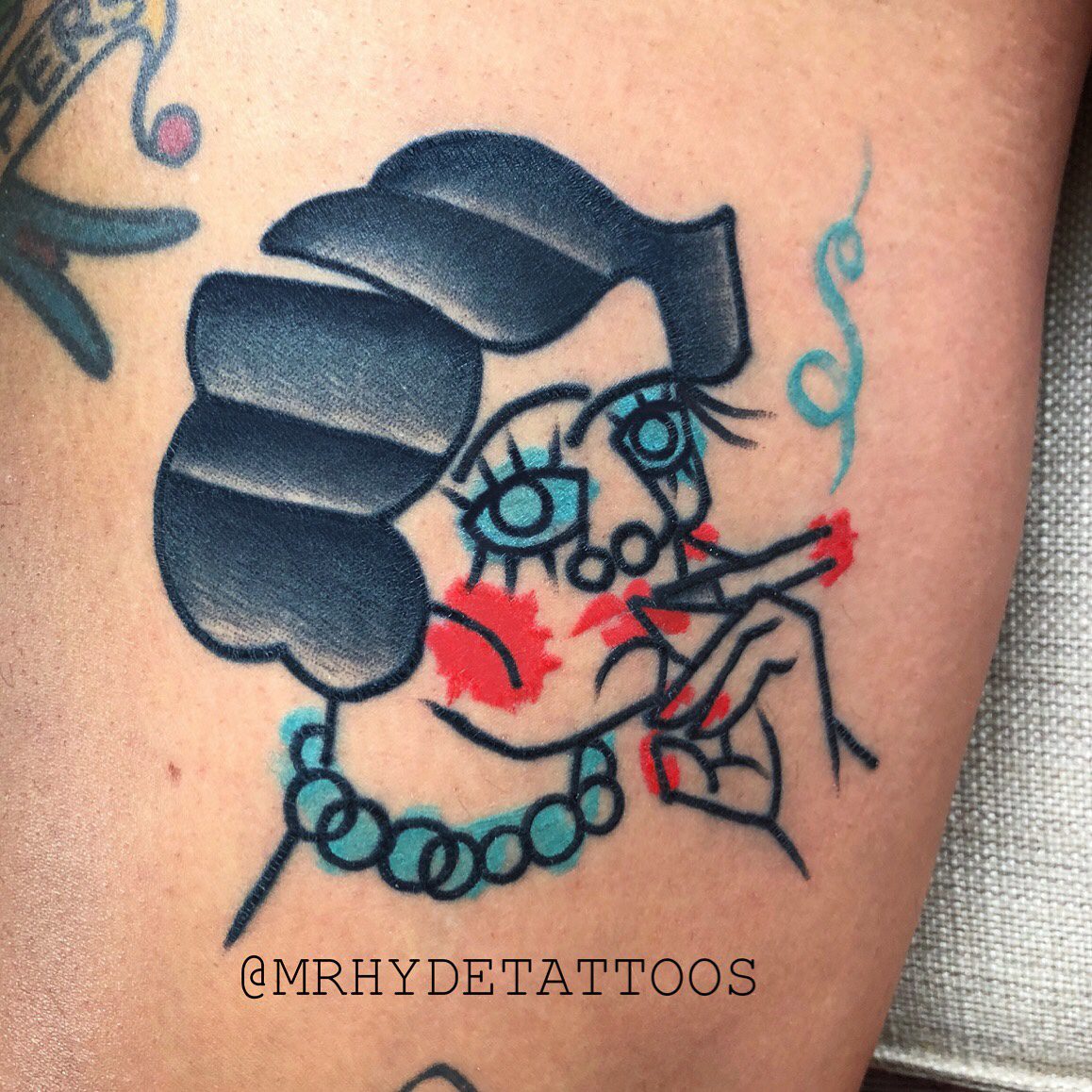
woman with blue eyes
Leave a Reply